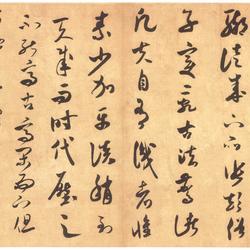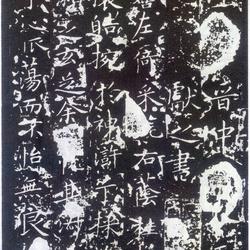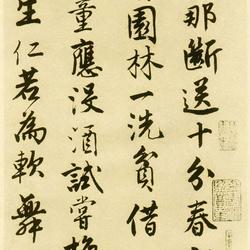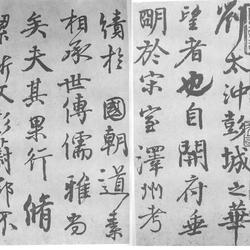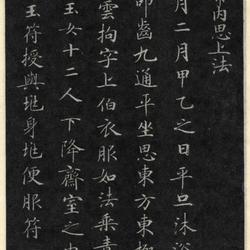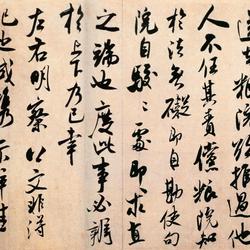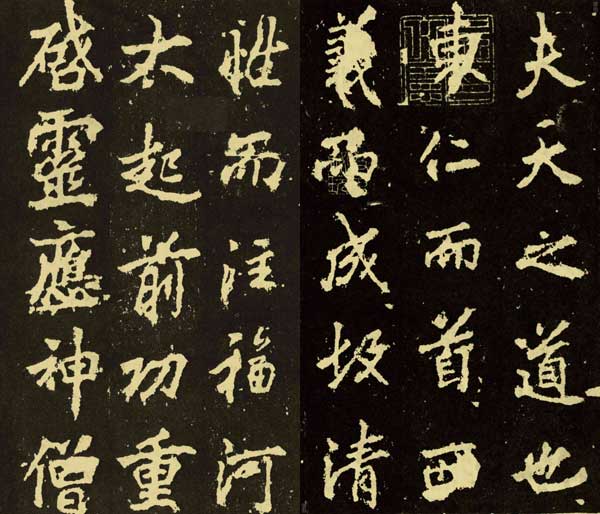
"Lushan Temple Stele", also known as "Yuelu Temple Stele", was written and written by Li Yong. It was erected in the 18th year of Kaiyuan of the Tang Dynasty (AD 730) and is located in Yuelu Park, Changsha, Hunan. The monument is 2.7 meters high and 1.35 meters wide. It has 28 lines of regular script and 56 characters in the entire line, totaling 1,413 characters. The dome is decorated with dragon reliefs and the four characters "Lushan Temple Stele" in Yangwen seal script. There are defects on the left and lower right sides of the stele. On the side of the stele is engraved the inscription "Yuanfeng Gengshen came to Xiangyang Mifu with Guanghui Taoist priests on the first day of the Yuan Dynasty" written by the great calligrapher Mi Fu of the Song Dynasty. "Yuanfeng Gengshen" means 1080 AD. The monument is now in Yuelu Mountain Park, Changsha.
"Lushan Temple Stele" is Li Yong's representative work in regular script. Among the many inscriptions written by Li Yong throughout his life, the Lushan Temple Monument is the most exquisite. The writing of this stele is dignified and vigorous, and its momentum is vertical and horizontal, just like the unshakable five mountains. The brushwork draws on the strengths of the Wei, Jin and Northern Dynasties masters. The structure is suitable vertically and horizontally. The brushwork is both hard and soft. The compositions are uneven and scattered, and the softness is transformed into hardness. Huang Tingjian of the Northern Song Dynasty commented on it: "The writing is bold and elegant, and the real rise is extraordinary. The hatred of the work is too deep, and the little effort is half the success, and the son Jing is resurrected, but that's it." Sun Chengze of the Qing Dynasty: "Although the "Yuelu Temple Stele" has been It's broken, but its edge is still sharp and unparalleled. It's a strange person from Beihai, so I wrote about it. In the past, Yu Zhongwei said that this stele was better than "Yunhui", so there must be something to see. In the early Song Dynasty, people from Beihai didn't attach much importance to Beihai's calligraphy. Mi followed his method a little bit; and when he came to Zhao Wenmin, every time he wrote a big calligraphy, he read the meaning and imitated it." ("Gengzi Xiaoxiaoji") Later calligraphy masters, such as Su, Mi Fu, Zhao Mengfu, etc. all followed his method. . The writing force of this stele is as powerful as the Five Mountains. It has always been included in the "Li Sixun Stele" and is known as Li Yong's calligraphy masterpiece.
The rubbings handed down from the Northern Song Dynasty include those collected by the Palace Museum, Zhao Shengbo and Suzhou Museum. There have been many inscriptions on "Lushan Temple Stele" published in the past dynasties. In 1984, the National Cultural Relics Publishing House published "Tang Li Yong's Lushan Temple Stele", which was based on Song rubbings collected in the Beijing Cultural Relics Store.

